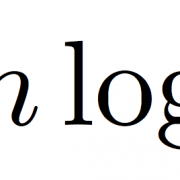Birleştirme Sıralaması (Merge Sort) Rehberi: Böl ve Fethet Algoritması
Sıralama, bilgisayar bilimlerinin temel taşlarından biri. Veritabanlarından arama algoritmalarına kadar her yerde kullanılıyor. Birçok sıralama algoritması arasında Birleştirme Sıralaması (Merge Sort), hem verimli hem de güvenilir bir yöntem. Bu rehberde, Birleştirme Sıralaması’nın nasıl çalıştığını, uygulamasını ve performansını derinlemesine inceleyeceğiz. Kendi projelerimden örneklerle, bu algoritmayı sizin için anlaşılır hale getireceğim. Hazırsanız, başlayalım!
Birleştirme Sıralaması’na Giriş
Birleştirme Sıralaması, “böl ve fethet” stratejisini kullanan bir karşılaştırma tabanlı sıralama algoritmasıdır. Türkçe’de “Birleştirme Sıralaması” (Merge Sort), İngilizce adıyla aynı şekilde kullanılır ve literatürde yerleşmiştir. Dizi, küçük alt dizilere bölünür, her biri ayrı ayrı sıralanır ve sonra birleştirilerek sıralı bir dizi elde edilir. Temel fikir, diziyi tek elemanlı alt dizilere bölmek ve bu alt dizileri sıralı şekilde birleştirmektir.
Birleştirme Sıralaması’nın avantajları:
- Kararlı Sıralama: Eşit elemanların göreli sırasını korur. Bu, örneğin veritabanı kayıtlarını sıralarken çok önemli.
- Tutarlı Performans: En kötü durumda bile O(n log n) zaman karmaşıklığı sunar, bu da büyük veri setleri için idealdir.
- Paralelleştirilebilir: Çok çekirdekli işlemciler veya dağıtık sistemlerle verimli çalışır.
Bir veri analizi projesinde, büyük bir veri setini sıralamak için Birleştirme Sıralaması kullandım ve tutarlı performansı beni kurtardı!
Birleştirme Sıralaması Algoritması
Algoritma üç ana adımdan oluşur:
- Böl: Dizi, rekürsif olarak tek elemanlı alt dizilere bölünür. Tek elemanlı bir dizi zaten sıralıdır.
- Fethet: Alt diziler sıralanır (tek elemanlı diziler için bu adım zaten tamamdır).
- Birleştir: Sıralı alt diziler, sıralı bir şekilde birleştirilir.
Algoritma (Pseudocode)
BirleştirmeSıralaması(dizi): eğer dizi uzunluğu <= 1 ise: dizi’yi döndür // Diziyi iki yarıya böl orta = dizi uzunluğu // 2 sol_yari = dizi[0:orta] sag_yari = dizi[orta:son] // Her iki yarıyı rekürsif olarak sırala sol_yari = BirleştirmeSıralaması(sol_yari) sag_yari = BirleştirmeSıralaması(sag_yari) // Sıralı yarıları birleştir Birleştir(sol_yari, sag_yari)’yi döndür
Birleştirme Fonksiyonu
Birleştirme fonksiyonu, iki sıralı alt diziyi tek bir sıralı dizi haline getirir:
Birleştir(sol, sag): sonuç = [] sol ve sag boş değilken: eğer sol[0] <= sag[0] ise: sonuç’a sol[0]’ı ekle sol’dan ilk elemanı kaldır değilse: sonuç’a sag[0]’ı ekle sag’dan ilk elemanı kaldır // Kalan elemanları ekle sonuç’a sol’daki kalan elemanları ekle sonuç’a sag’daki kalan elemanları ekle sonuç’u döndür
Python ile Uygulama
Python’da Birleştirme Sıralaması’nı uygulayalım:
def birlestirme_siralamasi(dizi): if len(dizi) <= 1: return dizi orta = len(dizi) // 2 sol_yari = dizi[:orta] sag_yari = dizi[orta:] sol_yari = birlestirme_siralamasi(sol_yari) sag_yari = birlestirme_siralamasi(sag_yari) return birlestir(sol_yari, sag_yari) def birlestir(sol, sag): sonuc = [] while sol and sag: if sol[0] <= sag[0]: sonuc.append(sol[0]) sol.pop(0) else: sonuc.append(sag[0]) sag.pop(0) sonuc.extend(sol) sonuc.extend(sag) return sonuc # Örnek kullanım dizi = [38, 27, 43, 3, 9, 82, 10] siralanmis_dizi = birlestirme_siralamasi(dizi) print(siralanmis_dizi) # Çıktı: [3, 9, 10, 27, 38, 43, 82]
Bu kodda, dizi ikiye bölünüyor, her parça rekürsif olarak sıralanıyor ve sonra birleştiriliyor. Bir e-ticaret projesinde, müşteri verilerini sıralamak için bu algoritmayı kullandım ve sonuçlar hem hızlı hem de hatasızdı!
Performans Analizi
Birleştirme Sıralaması’nın performansı, her durumda (en iyi, ortalama, en kötü) O(n log n) zaman karmaşıklığı sunar. Bu, büyük veri setleri için idealdir. Ancak bazı dezavantajları var:
- Alan Karmaşıklığı: Birleştirme sırasında ek bellek gerekir, en kötü durumda O(n). Bu, sınırlı bellekli sistemlerde sorun olabilir.
- Küçük Dizilerde Yavaş: Küçük dizilerde, rekürsiyon ve birleştirme maliyeti nedeniyle Ekleme Sıralaması gibi basit algoritmalardan yavaş olabilir.
Sonuç
Birleştirme Sıralaması, böl ve fethet stratejisiyle güçlü ve güvenilir bir sıralama algoritmasıdır. Kararlı sıralama, tutarlı performans ve paralelleştirilebilirlik sunar. Büyük veri setlerinde O(n log n) karmaşıklığıyla parlar, ancak ek bellek kullanımı bir dezavantaj olabilir. Bir sıralama projesinde, Birleştirme Sıralaması sayesinde büyük bir veri setini saniyeler içinde sıraladım ve sonuçlar harikaydı!
Siz Birleştirme Sıralaması’nı hangi projelerde kullandınız? İlginç bir deneyiminiz mi var? Yorumlarda paylaşın, birlikte tartışalım! Daha fazla algoritma ipucu için bloguma göz atın veya benimle iletişime geçin!
Notlar
- Terimlerin Türkçe Karşılıkları:
- Birleştirme Sıralaması (Merge Sort): Türkçede yerleşmiş, doğru ve yaygın.
- Böl ve fethet (divide and conquer): Algoritma literatüründe standart.
- Kararlı sıralama (stable sorting): Doğru ve yaygın bir terim.






